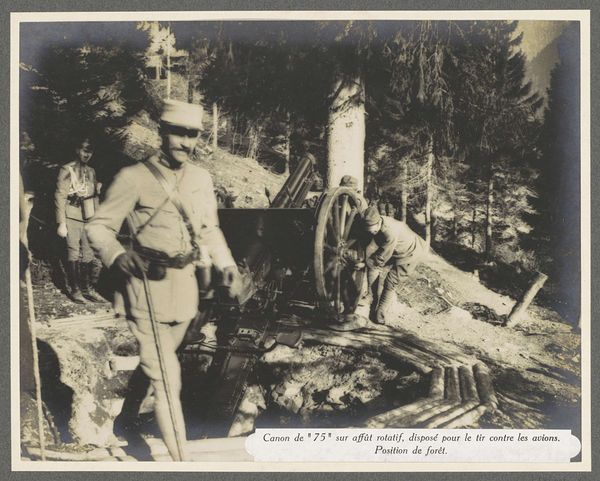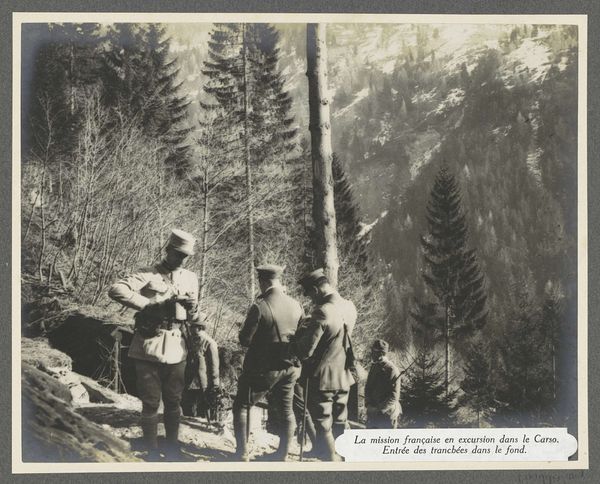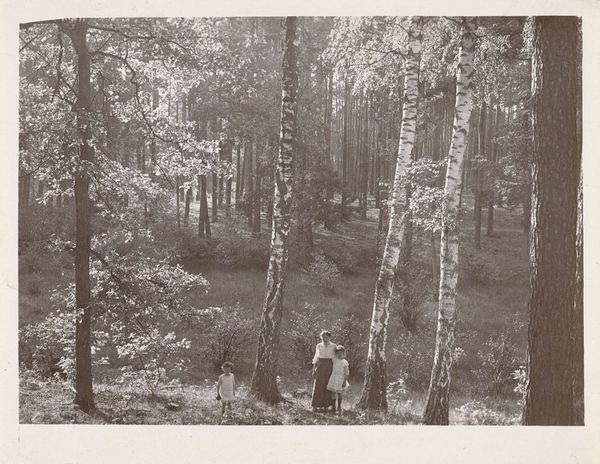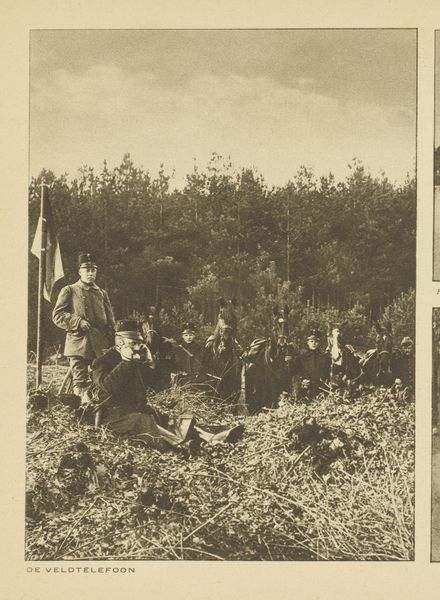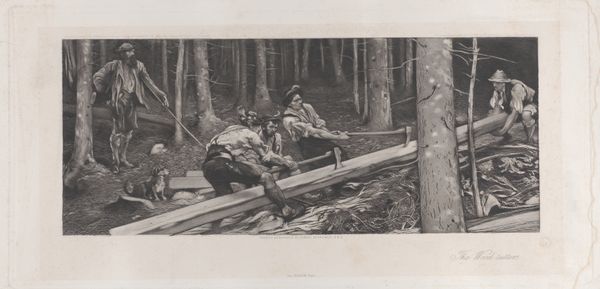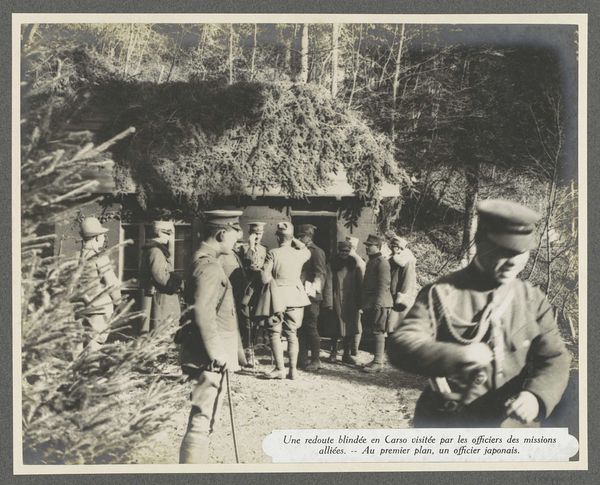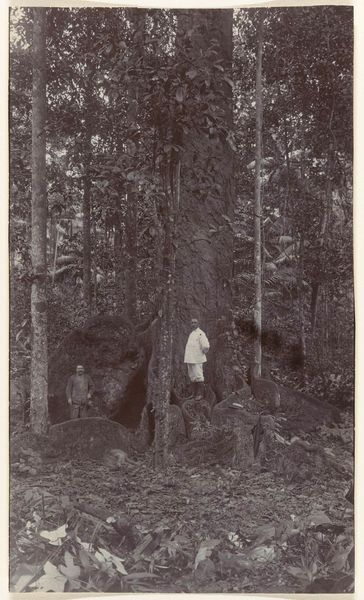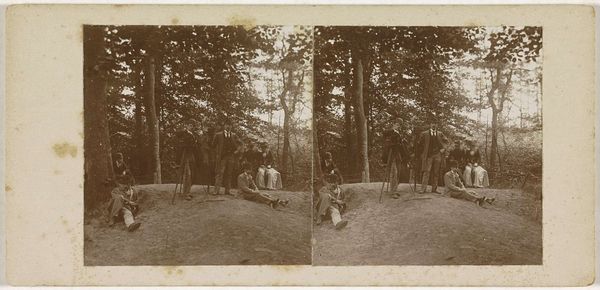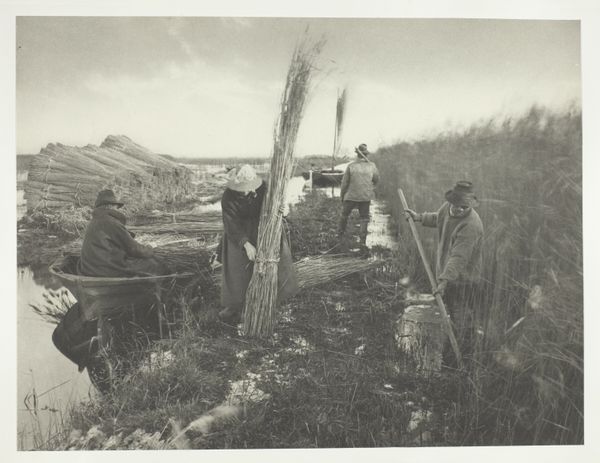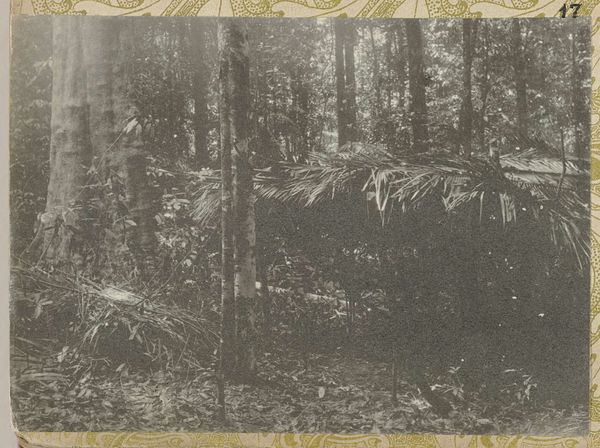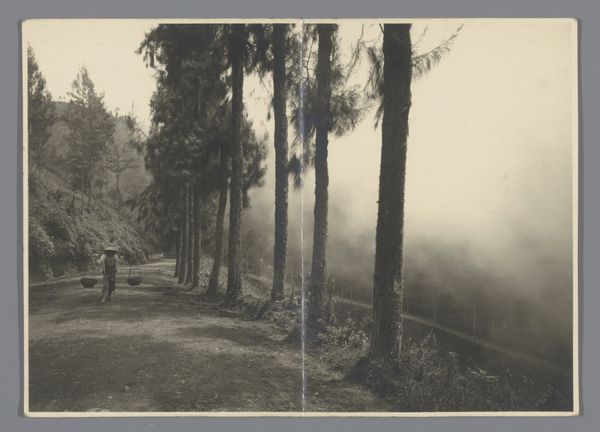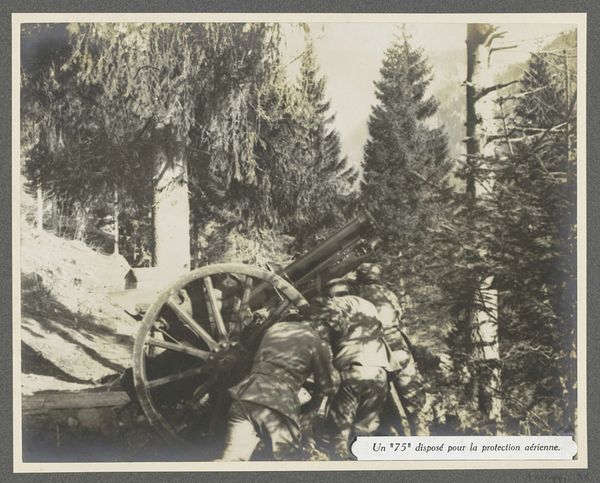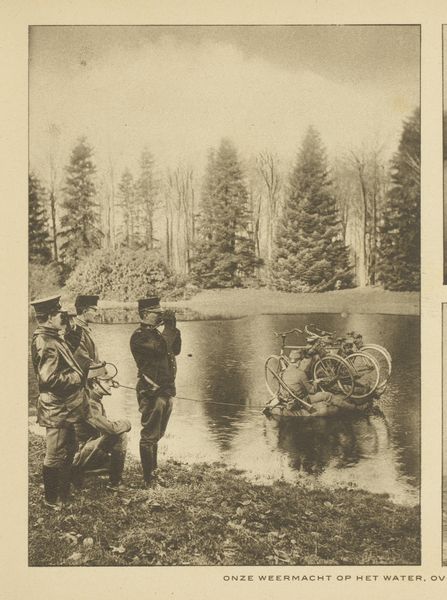
print, photography, gelatin-silver-print
#
print photography
# print
#
landscape
#
photography
#
gelatin-silver-print
Dimensions: height 180 mm, width 238 mm
Copyright: Rijks Museum: Open Domain
Curator: This gelatin silver print, taken around 1929, is titled "Leerlingen van Schule Schloss Salem assisteren een houtvester," which translates to "Students from Salem Castle School assisting a forester." Editor: Immediately striking is the contrast between the industrious activity of the figures and the somber, almost overwhelming presence of the forest behind them. Curator: Indeed. The photo depicts students from a boarding school founded on progressive educational principles. Part of their curriculum involved practical labor, connecting them to the land and fostering a sense of community. The image is interesting because it attempts to reconcile this educational approach with broader forestry and labor trends of the era. Editor: The composition, with its use of light and shadow, really draws me in. Notice how the lightest tones highlight the figures at work, creating a dynamic rhythm that echoes their movements, against the stark verticals of the looming dark forest, an interplay that evokes both collaboration and individual effort. Curator: I see that interplay as well, but the image, while seemingly documenting a wholesome activity, might also reflect the complexities of education and social expectations within that specific historical context. It speaks of the institutional desire to shape and train young minds through engagement with the physical world, yet framed within a hierarchical structure where labor, nature and education are linked. Editor: I suppose looking at it again, there's something inherently staged or formally arranged about the figures, detracting somewhat from its perceived documentary realness, like a group of actors, framed to look sincere and busy against this static backdrop. I still find myself returning to the tonal variation in the photographic surface itself; these darker areas create such an ominous mood to the piece overall. Curator: Absolutely, that formal reading definitely aligns with broader photographic strategies and ideological projects typical for the late Weimar Republic in Germany, a context where the role of education, physical activity and community-building had strong political undercurrents. Editor: It’s a beautifully executed piece from an aesthetic and compositional perspective. The light and shadow variations alone invite ongoing visual exploration. Curator: I agree; I see in this image an engagement with both history and photographic language. A convergence that reveals so much.
Comments
No comments
Be the first to comment and join the conversation on the ultimate creative platform.
